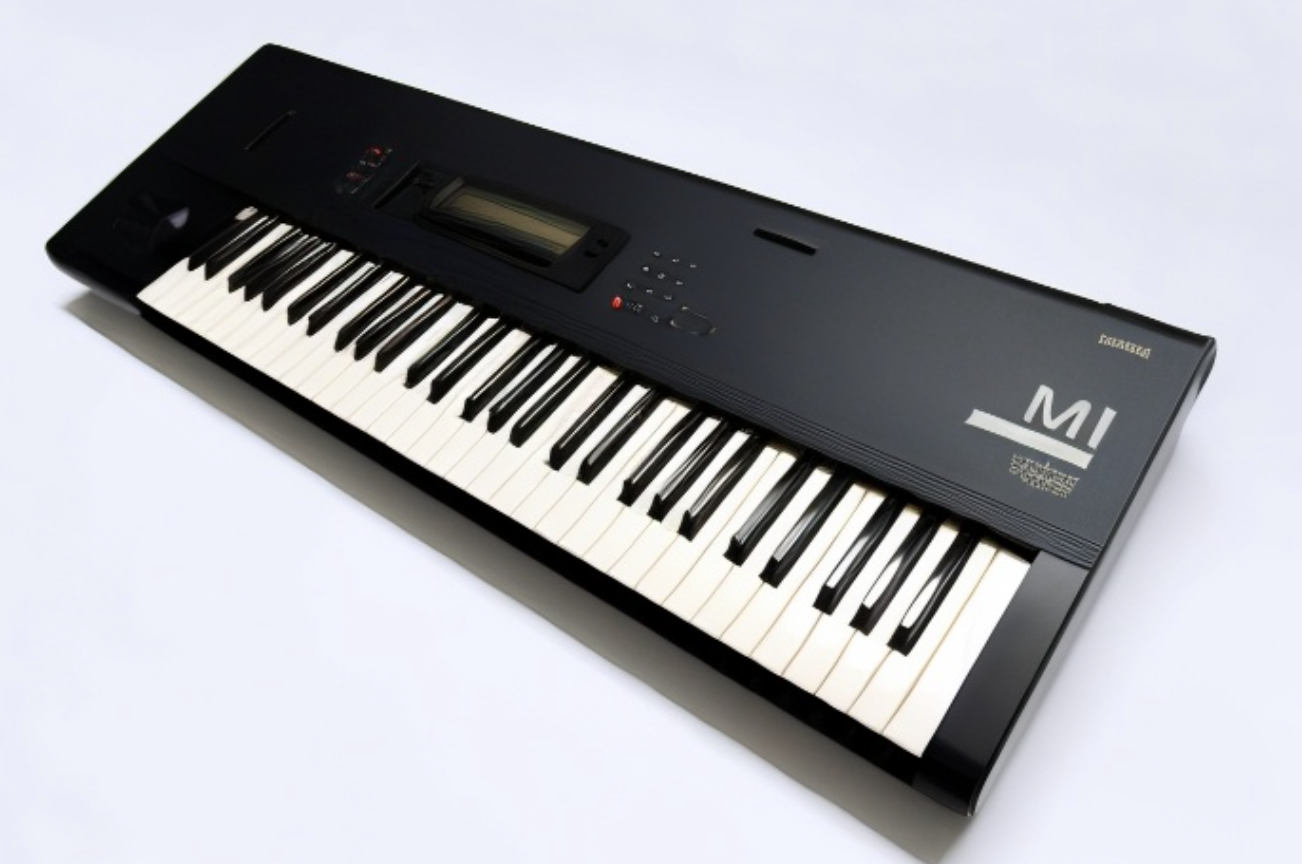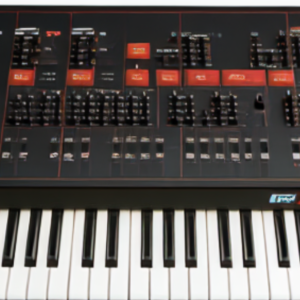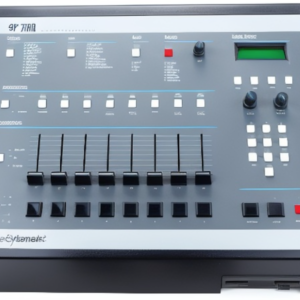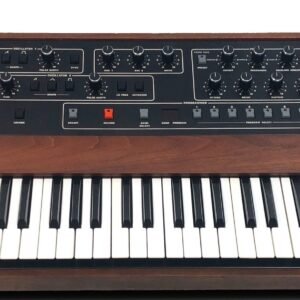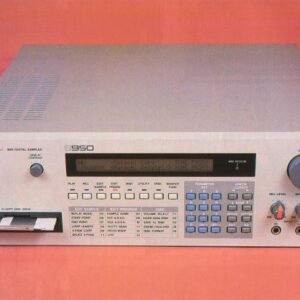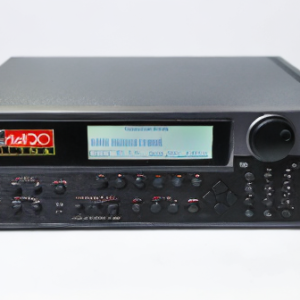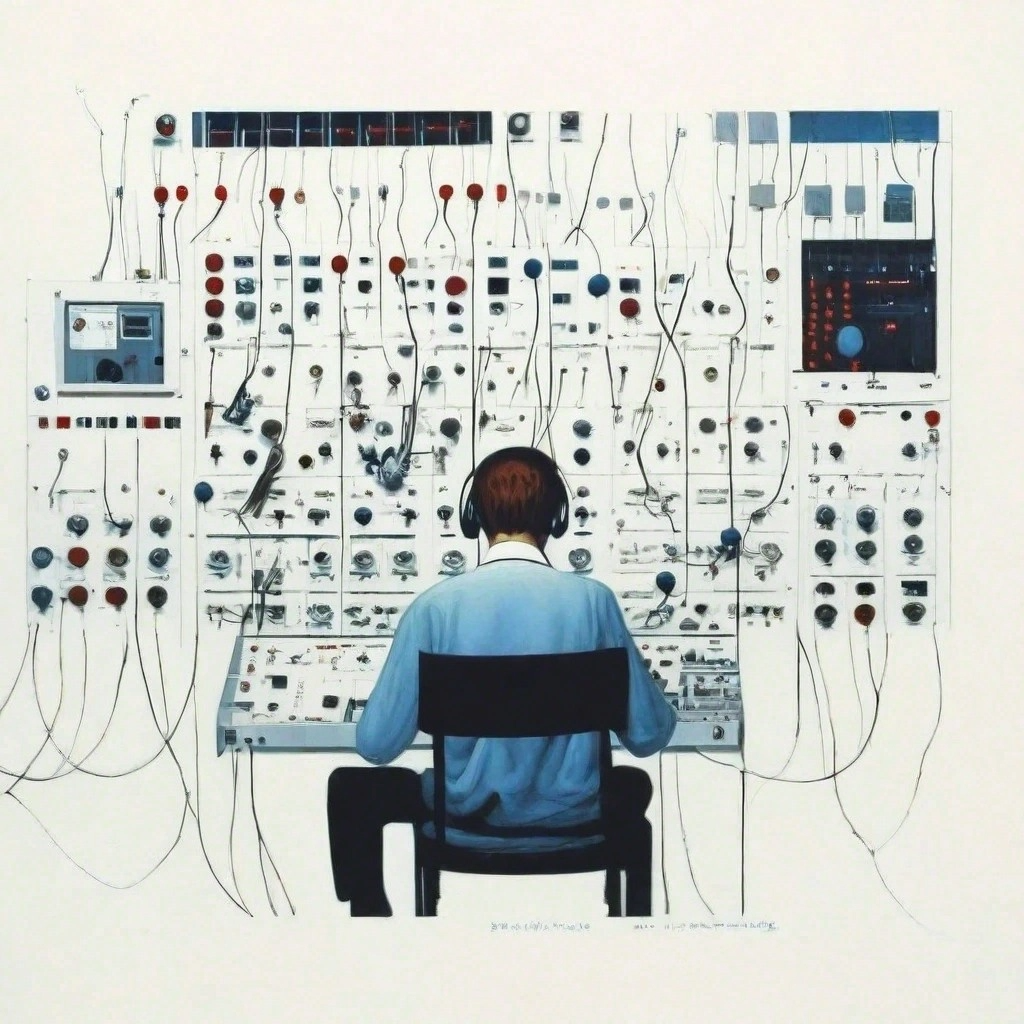Introduction
The Korg M1 stands as a seminal instrument in the realm of synthesizers, marking a significant milestone in the evolution of music technology. Introduced in 1988, the M1 swiftly garnered widespread acclaim and became one of the best-selling synthesizers of all time. Its impact reverberates through the realms of pop, electronic, and dance music, leaving an indelible mark on the musical landscape.
At its core, the Korg M1 was revolutionary for its time, incorporating cutting-edge digital synthesis technology in a compact and user-friendly package. Its arrival marked a departure from traditional analog synthesizers, offering musicians a vast array of sounds and capabilities previously unimaginable.
Beyond its technical prowess, the M1’s intuitive interface and groundbreaking features democratized music production, empowering musicians of all levels to create professional-grade compositions. Its combination of versatility, accessibility, and high-quality sound made it a staple in studios, live performances, and home setups alike.
As we delve deeper into the design, features, and impact of the Korg M1, we uncover not just a synthesizer, but a cultural icon that continues to shape the musical landscape decades after its debut.
Design and Features
The design of the Korg M1 reflects a harmonious blend of functionality and elegance, encapsulating the ethos of innovation that defined the late 1980s. Its sleek and compact form factor belies the vast array of features and capabilities housed within.
At the heart of the M1 lies a powerful 16-bit digital signal processor (DSP), which serves as the engine driving its impressive sound generation capabilities. This DSP, combined with Korg’s proprietary AI synthesis system, enables the creation of rich and dynamic sounds with unparalleled realism and depth.
One of the standout features of the M1 is its extensive sound library, comprising over 1000 presets covering a wide range of instruments, from pianos and organs to strings, brass, and synthesizers. These presets, meticulously crafted by Korg’s team of sound designers, provide musicians with an extensive palette of sounds to explore and manipulate.
The M1 also introduced the concept of “Combination” patches, allowing users to layer up to eight different sounds simultaneously to create complex and textured sonic landscapes. This feature opened up new possibilities for sound design and arrangement, enabling musicians to craft intricate compositions with ease.
In terms of performance features, the M1 boasts a highly responsive velocity-sensitive keyboard, allowing for expressive playing dynamics that respond to the nuances of the performer’s touch. Additionally, the M1 features a built-in sequencer with 8 tracks and 10 songs, providing users with a powerful tool for composing and arranging music directly on the instrument.
Connectivity-wise, the M1 offers a comprehensive array of options, including MIDI input and output ports for seamless integration with external devices such as sequencers, drum machines, and computers. It also features stereo audio outputs, a headphone jack, and optional expansion cards for additional sound libraries and capabilities.
Overall, the design and features of the Korg M1 represent a groundbreaking leap forward in the world of synthesizers, setting a new standard for versatility, performance, and ease of use that continues to inspire musicians to this day.
Sound Generation
The Korg M1 revolutionized the world of synthesizers with its groundbreaking sound generation capabilities, setting a new standard for realism and versatility. At the core of its sonic arsenal lies Korg’s innovative AI (Advanced Integrated) synthesis system, which combines sampled waveforms with advanced digital processing to create lifelike and expressive sounds.
The M1’s sound generation engine is powered by a sophisticated 16-bit digital signal processor (DSP), which enables the instrument to faithfully reproduce a wide range of acoustic and electronic instruments with stunning clarity and detail. From the rich warmth of acoustic pianos to the shimmering brilliance of synthesized pads, the M1 delivers a level of sonic realism that was previously unheard of in a digital synthesizer.
Central to the M1’s sonic palette are its extensive sample libraries, which include meticulously recorded waveforms of real instruments such as pianos, organs, guitars, and drums. These high-quality samples serve as the building blocks for the M1’s sounds, providing a level of authenticity and richness that sets it apart from its competitors.
In addition to its sampled waveforms, the M1 also features a powerful synthesis engine that allows for deep editing and manipulation of sounds. Users can tweak parameters such as envelope settings, filter cutoffs, and modulation sources to sculpt and shape their sounds to perfection. This level of control, combined with the instrument’s intuitive interface, makes it a favorite among sound designers and musicians alike.
One of the M1’s most iconic features is its ability to layer multiple sounds together using the “Combination” mode. This allows users to create lush and complex textures by blending different instruments and soundsources, resulting in a level of sonic depth and richness that is unparalleled.
Whether used in the studio, on stage, or in a home setup, the Korg M1 continues to inspire musicians with its unparalleled sound generation capabilities. Its ability to faithfully reproduce the sounds of real instruments, combined with its versatile synthesis engine and intuitive interface, make it a timeless classic that remains as relevant today as it was upon its release.
Technical Specifications
**Sound Engine:**
– **Synthesis Type:** Advanced Integrated (AI) synthesis
– **DSP:** 16-bit digital signal processor
– **Waveforms:** Extensive library of sampled waveforms
– **Polyphony:** 16 voices
– **Oscillators:** Variable depending on mode (single, double, or combination)
**Keyboard:**
– **Type:** Velocity-sensitive, 61 keys
– **Aftertouch:** Yes (optional with certain models)
**Memory:**
– **Preset Sounds:** Over 1000 presets covering a wide range of instruments
– **Combination Patches:** Up to 100 programmable combinations of sounds
– **Sequencer Memory:** 8 tracks, 10 songs
**Effects:**
– **Built-in Effects:** Reverb, Delay, Chorus, EQ
– **Assignable Effects:** 2 insert effects per program/combination
**Connectivity:**
– **MIDI:** In, Out, Thru
– **Audio Outputs:** Stereo Main Out, Stereo Individual Outs
– **Expansion:** Optional expansion cards for additional sounds and capabilities
– **Other:** Headphone Jack, Pedal Inputs (Assignable)
**Display:**
– **Type:** Backlit LCD
– **Interface:** Intuitive menu-driven interface for easy navigation
**Dimensions and Weight:**
– **Dimensions:** Varies depending on model and configuration
– **Weight:** Varies depending on model and configuration
**Power:**
– **Power Supply:** AC Adapter (included)
– **Power Consumption:** Varies depending on model and configuration
**Compatibility:**
– **Operating System:** Compatible with a wide range of operating systems
– **Software:** Compatible with MIDI sequencing software, DAWs, and other music production tools
**Included Accessories:**
– **AC Adapter**
– **User Manual**
– **Optional Accessories:** MIDI cables, Expansion Cards, Expression Pedals
Please note that specifications may vary slightly depending on the specific model and configuration of the Korg M1 synthesizer.
Performance and Workflow
The Korg M1 excels not only in its sound generation capabilities but also in its performance and workflow features, making it a versatile and intuitive instrument for musicians of all levels. From live performances to studio sessions, the M1 offers a seamless and efficient workflow that enhances creativity and productivity.
**1. Performance Features:**
– **Velocity-Sensitive Keyboard:** The M1 features a 61-key velocity-sensitive keyboard, allowing for expressive playing dynamics that respond to the nuances of the performer’s touch. This sensitivity adds depth and realism to performances, enabling musicians to convey emotion through their playing.
– **Aftertouch (Optional):** Certain models of the M1 include aftertouch functionality, allowing users to apply additional modulation effects by varying pressure on the keys after they’ve been pressed. This feature adds an extra layer of expressiveness to performances, allowing for greater control over sound manipulation.
**2. Sequencing and Arrangement:**
– **Built-in Sequencer:** The M1 is equipped with an onboard sequencer featuring 8 tracks and 10 songs, providing users with a powerful tool for composing and arranging music directly on the instrument. This sequencer enables musicians to capture ideas quickly and efficiently, making it ideal for both live performances and studio sessions.
– **Real-Time Recording:** The M1’s sequencer supports real-time recording, allowing users to capture performances as they play without the need for step sequencing. This intuitive workflow streamlines the composition process, enabling musicians to focus on creativity rather than technicalities.
**3. Sound Selection and Editing:**
– **Extensive Sound Library:** With over 1000 preset sounds covering a wide range of instruments, the M1 offers a diverse sonic palette for musicians to explore. From realistic emulations of acoustic instruments to cutting-edge synthesized textures, the M1’s sound library provides endless inspiration for creative exploration.
– **Combination Mode:** The M1’s Combination mode allows users to layer up to 8 different sounds simultaneously, enabling the creation of complex and textured sonic landscapes. This feature opens up new possibilities for sound design and arrangement, empowering musicians to craft rich and immersive compositions with ease.
**4. Connectivity and Integration:**
– **MIDI Connectivity:** The M1 features MIDI input, output, and thru ports, allowing for seamless integration with external devices such as sequencers, drum machines, and computers. This MIDI compatibility enables users to expand the M1’s capabilities and incorporate it into larger production setups.
– **Expansion Options:** The M1 supports optional expansion cards, providing users with access to additional sounds and capabilities beyond the built-in presets. These expansion cards allow musicians to customize their M1 to suit their specific musical needs, further enhancing its versatility and flexibility.
In summary, the Korg M1 offers a comprehensive set of performance and workflow features that cater to the needs of both seasoned professionals and aspiring musicians. With its intuitive interface, extensive sound library, and powerful sequencing capabilities, the M1 continues to inspire creativity and innovation in the world of music production.
Notable Users and Influences
The Korg M1 has left an indelible mark on the world of music, shaping the sound of countless recordings and influencing generations of musicians across diverse genres. From pop and rock to electronic and dance music, the M1’s distinctive sounds have found their way into hit songs, iconic albums, and live performances around the globe. Here are some notable users and the impact of the Korg M1 on their music:
**1. Madonna:**
– The Korg M1 played a significant role in shaping the sound of Madonna’s iconic album “Like a Prayer,” released in 1989. Tracks such as “Express Yourself” and “Cherish” feature the M1’s unmistakable piano and choir sounds, adding depth and texture to the pop superstar’s compositions.
**2. Michael Jackson:**
– The King of Pop himself, Michael Jackson, utilized the Korg M1’s versatile sounds in his groundbreaking album “Dangerous,” released in 1991. Tracks like “Remember the Time” and “Black or White” showcase the M1’s dynamic capabilities, contributing to the album’s lush and vibrant production.
**3. Enya:**
– The ethereal sounds of Enya’s music were elevated by the atmospheric textures of the Korg M1. Tracks like “Orinoco Flow” from her album “Watermark” feature the M1’s iconic choir and pad sounds, adding a sense of depth and mystique to her enchanting compositions.
**4. Orbital:**
– The British electronic duo Orbital embraced the Korg M1’s cutting-edge sounds in their pioneering work in the techno and ambient genres. Tracks like “Chime” and “Belfast” showcase the M1’s versatility, with its rich pads and pulsating basslines becoming integral elements of Orbital’s signature sound.
**5. Snap!:**
– The Korg M1’s infectious bass and synth sounds played a pivotal role in shaping the sound of Snap!’s hit single “Rhythm Is a Dancer,” released in 1992. The song’s catchy hooks and danceable grooves, powered by the M1’s dynamic sounds, became anthems of the ’90s dance music scene.
**6. Dr. Dre:**
– The Korg M1 found its way into the realm of hip-hop through its use by influential producers like Dr. Dre. Its distinctive piano and organ sounds can be heard in tracks by artists such as Snoop Dogg and Tupac Shakur, contributing to the iconic West Coast sound of the ’90s.
**7. Daft Punk:**
– The French electronic duo Daft Punk incorporated the Korg M1’s vintage sounds into their innovative blend of house, funk, and disco. Tracks like “Around the World” and “One More Time” feature the M1’s iconic presets, adding a nostalgic touch to their futuristic productions.
In conclusion, the Korg M1’s influence extends far beyond its technical specifications, leaving an enduring legacy in the world of music through its use by iconic artists and its impact on popular culture. Its versatile sounds and intuitive interface have made it a staple in studios and live performances alike, cementing its status as one of the most iconic synthesizers of all time.
Impact and Legacy
The impact of the Korg M1 on the world of music is immeasurable, leaving an enduring legacy that continues to resonate decades after its debut. From its innovative sound generation capabilities to its intuitive interface and versatile performance features, the M1 revolutionized the way musicians create and experience music. Here are some key aspects of its impact and legacy:
**1. Pioneering Digital Synthesis:**
– The Korg M1 marked a pivotal moment in the evolution of synthesizers, ushering in the era of digital synthesis with its groundbreaking AI (Advanced Integrated) synthesis system. Its ability to combine sampled waveforms with advanced digital processing set a new standard for realism and versatility in sound generation, laying the groundwork for future generations of synthesizers.
**2. Democratizing Music Production:**
– With its user-friendly interface and extensive sound library, the M1 democratized music production, making professional-grade synthesis accessible to musicians of all levels. Its intuitive design and versatile performance features empowered artists to explore new creative possibilities and express themselves in innovative ways.
**3. Shaping Popular Music:**
– The iconic sounds of the Korg M1 became synonymous with the sound of the late 1980s and early 1990s, shaping the landscape of pop, electronic, and dance music. Its lush pads, dynamic basses, and realistic pianos found their way into hit songs, iconic albums, and live performances around the world, leaving an indelible mark on popular culture.
**4. Influence on Music Technology:**
– The M1’s success paved the way for advancements in music technology, inspiring manufacturers to push the boundaries of sound synthesis and digital processing. Its innovative features and versatile performance capabilities served as a blueprint for future synthesizers, samplers, and workstation keyboards, influencing generations of musicians and developers alike.
**5. Enduring Popularity and Reverence:**
– Despite being released over three decades ago, the Korg M1 remains a revered and sought-after instrument among musicians, producers, and collectors. Its timeless sounds and iconic design continue to captivate audiences and inspire artists across diverse genres, cementing its status as a legendary synthesizer with an enduring legacy.
In conclusion, the Korg M1’s impact and legacy extend far beyond its technical specifications, embodying a spirit of innovation, creativity, and cultural significance that transcends generations. Its influence on music technology, popular music, and the way we create and experience music continues to resonate today, making it a timeless classic and a true icon of electronic music.
